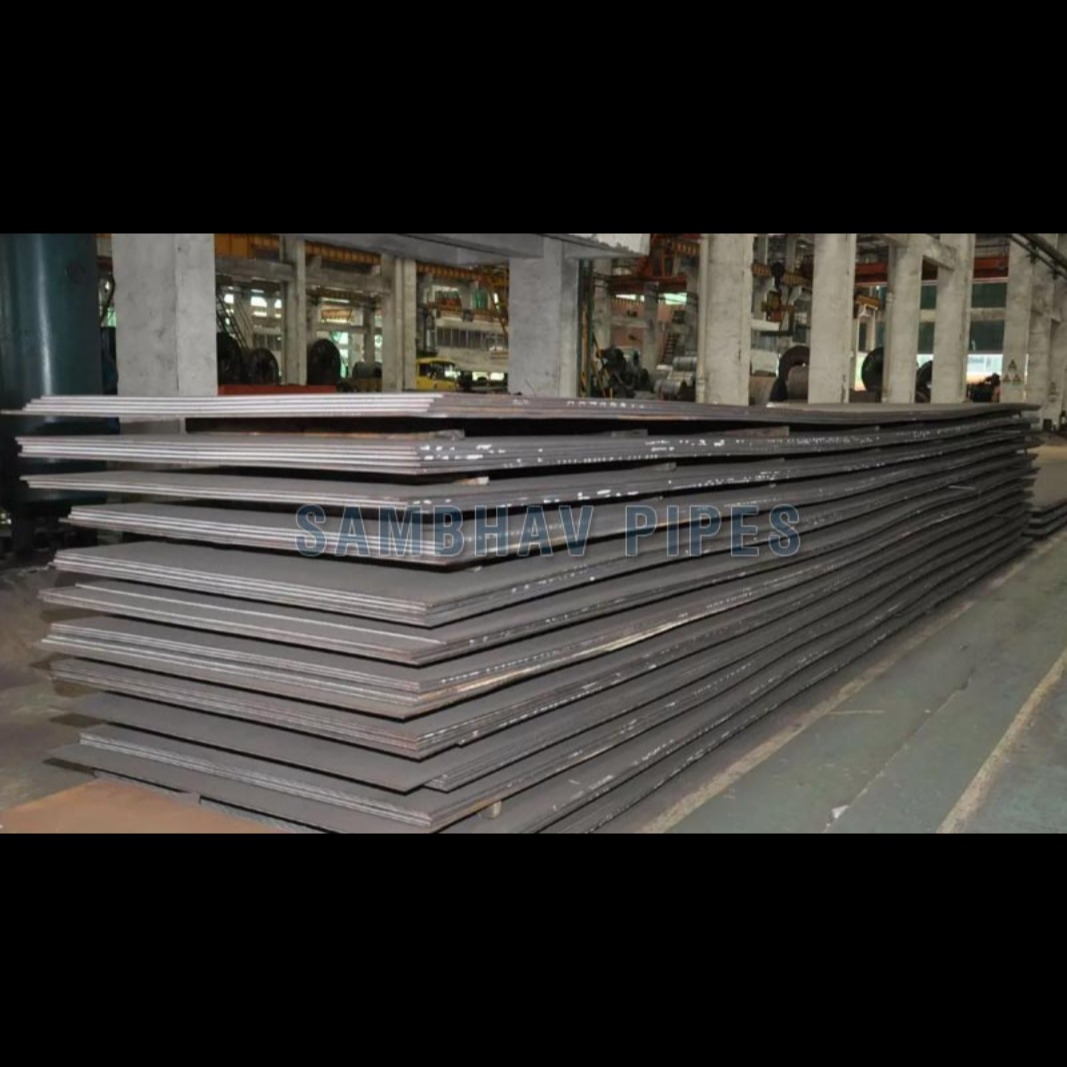High Manganese Steel Plates – Extreme Impact Resistance with Work-Hardening Properties High Manganese Steel Plates, often referred to as Hadfield Steel, are a specialized category of abrasion- and impact-resistant steel known for their exceptional toughness and work-hardening ability. These plates are primarily composed of 11–14% manganese, which gives them a unique combination of high impact strength, wear resistance, and non-magnetic behavior. Unlike conventional wear-resistant materials that become brittle over time, manganese plates actually harden with repeated impact, making them especially suitable for environments where high shock and abrasion are constant. They retain ductility even in their hardened state and can withstand intense deformation without cracking. Key Features: Work-hardening steel – becomes harder with impact Excellent resistance to gouging, high-stress abrasion, and impact Non-magnetic even under severe cold-working Good resistance to high-pressure environments and fatigue Can be cut and welded with special care and technique Typical Chemical Composition (%): Element Range Carbon (C) 1.00 – 1.40 Manganese (Mn) 11.00 – 14.00 Silicon (Si) ≤ 0.40 Phosphorus (P) ≤ 0.07 Sulfur (S) ≤ 0.03 Iron (Fe) Balance Mechanical Properties: Property Value (Approx.) Tensile Strength 800 – 1000 MPa Yield Strength 350 – 500 MPa Elongation ≥ 30% Hardness (As Rolled) ~200 BHN (work-hardens up to 550 BHN) Common Applications: Crusher jaws, liners, hammers, and shredder components Railway crossing points and trackwork Earthmoving and mining equipment Cement and aggregate plant parts Industrial chutes, buckets, and hoppers Conclusion: High Manganese Steel Plates are uniquely suited for severe wear environments where both impact resistance and surface hardening are critical. Whether it’s in mining, quarrying, railways, or recycling industries, manganese plates ensure longer service life, fewer replacements, and robust performance in the toughest applications.
Chat with us on WhatsApp
×
This is your website preview.
Currently it only shows your basic business info. Start adding relevant business details such as description, images and products or services to gain your customers attention by using Boost 360 android app / iOS App / web portal.
High Manganese Steel Plates – Extreme Impact Re...

2025-06-25T04:16:52
High Manganese Steel Plates – Extreme Impact Resistance with Work-Hardening Properties High Manganese Steel Plates, often referred to as Hadfield Steel, are a specialized category of abrasion- and impact-resistant steel known for their exceptional toughness and work-hardening ability. These plates are primarily composed of 11–14% manganese, which gives them a unique combination of high impact strength, wear resistance, and non-magnetic behavior. Unlike conventional wear-resistant materials that become brittle over time, manganese plates actually harden with repeated impact, making them especially suitable for environments where high shock and abrasion are constant. They retain ductility even in their hardened state and can withstand intense deformation without cracking. Key Features: Work-hardening steel – becomes harder with impact Excellent resistance to gouging, high-stress abrasion, and impact Non-magnetic even under severe cold-working Good resistance to high-pressure environments and fatigue Can be cut and welded with special care and technique Typical Chemical Composition (%): Element Range Carbon (C) 1.00 – 1.40 Manganese (Mn) 11.00 – 14.00 Silicon (Si) ≤ 0.40 Phosphorus (P) ≤ 0.07 Sulfur (S) ≤ 0.03 Iron (Fe) Balance Mechanical Properties: Property Value (Approx.) Tensile Strength 800 – 1000 MPa Yield Strength 350 – 500 MPa Elongation ≥ 30% Hardness (As Rolled) ~200 BHN (work-hardens up to 550 BHN) Common Applications: Crusher jaws, liners, hammers, and shredder components Railway crossing points and trackwork Earthmoving and mining equipment Cement and aggregate plant parts Industrial chutes, buckets, and hoppers Conclusion: High Manganese Steel Plates are uniquely suited for severe wear environments where both impact resistance and surface hardening are critical. Whether it’s in mining, quarrying, railways, or recycling industries, manganese plates ensure longer service life, fewer replacements, and robust performance in the toughest applications.
2025-06-25T04:16:52

Submit Your Enquiry